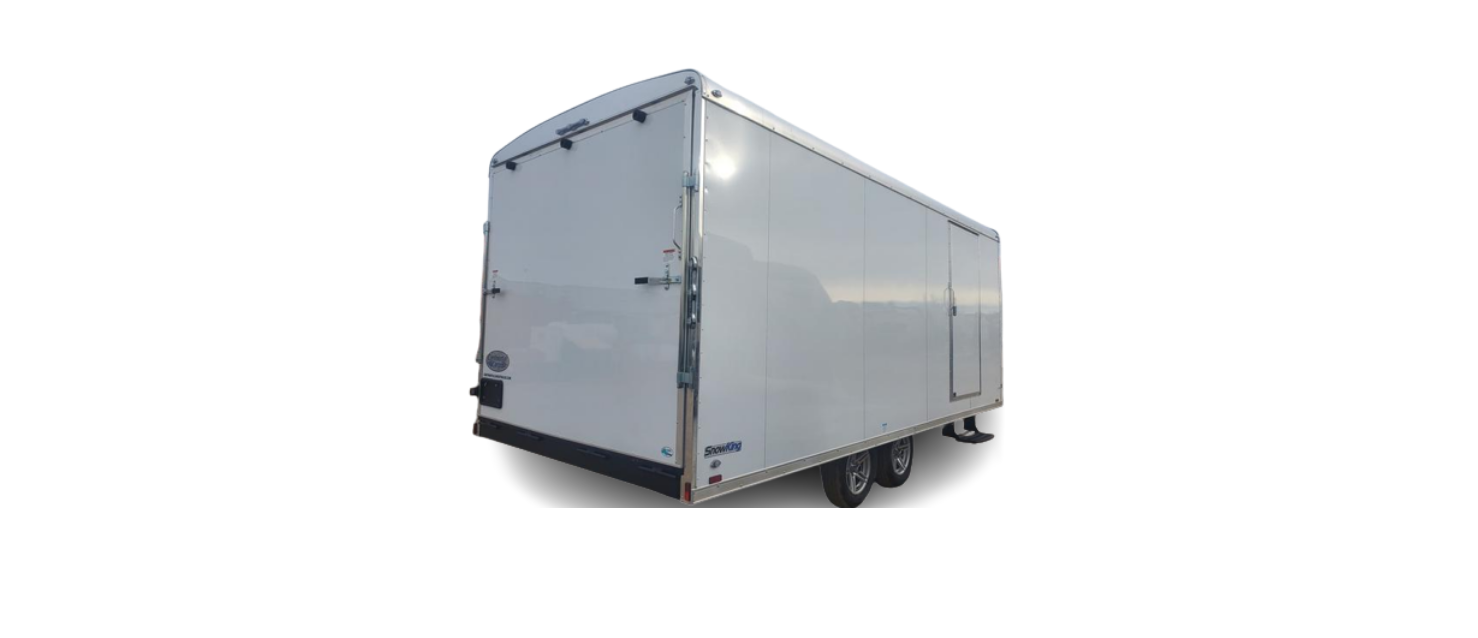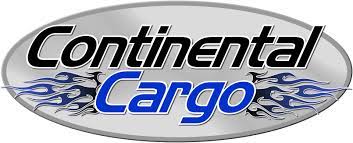2022 Continental Cargo Snow King CARGO TRAILERS Tire Fundamentals
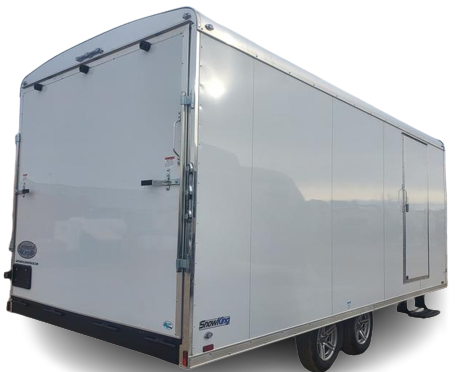
Tire Fundamentals
Federal law requires tire manufacturers to place standardized information on the sidewall of all tires. This information identifies and describes the fundamental characteristics of the tire and also provides a tire identification number for safety standard certification and in case of a recall.
Information on Passenger Vehicle Tires
Please refer to the diagram below.
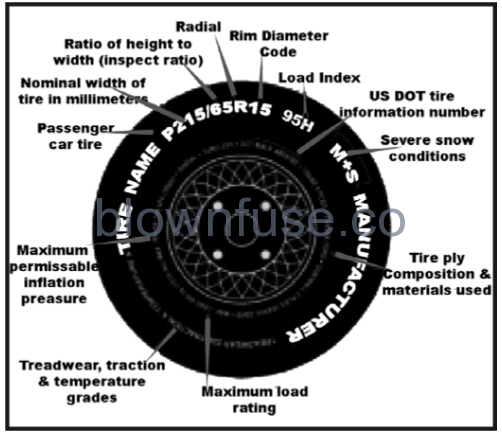
P – The “P” indicates the tire is for passenger vehicles.
Passenger car tires are not recommended for use on trailers, because the capacity ratings are not marked on the sidewalls of these tires. In the event a passenger car tire is used, the capacity must be de-rated by 10%.
Next Number
This three-digit number gives the width in millimeters of the tire from the sidewall edge to sidewall edge. In general, the larger the number, the wider the tire.
Next Number
This two-digit number, known as the aspect ratio, gives the tire’s ratio of height to width. Numbers of 70 or lower indicate a short sidewall for improved steering response and better overall handling on dry pavement.
R – The “R” stands for radial. Radial ply construction of tires has been the industry standard for the past 20 years.
Next Number
This two-digit number is the wheel or rim diameter in inches. If you change your wheel size, you will have to purchase new tires to match the new wheel diameter.
Next Number
This two- or three-digit number is the tire’s load index. It is a measurement of how much weight each tire can support. You may find this information in your Owner’s Manual. If not, contact a local tire dealer.
You may not find this information on all tires because it is not required by law.
M+S – The “M+S” or “M/S” indicates that the tire has some mud and snow capability. Most radial tires have these markings.
Speed Rating –
The speed rating denotes the speed at which a tire is designed to be driven for extended periods of time. The ratings range from 65 miles per hour (mph) to 186 mph. These ratings are listed below.
You may not find this information on all tires because it is not required by law.
|
Letter Rating |
Speed Rating |
|---|---|
|
ST |
65 mph |
|
Q |
99 mph |
|
R |
106 mph |
|
S |
112 mph |
|
T |
118 mph |
|
U |
124 mph |
|
H |
130 mph |
|
V |
149 mph |
|
W |
168* mph |
|
Y |
186* mph |
* For tires with a maximum speed capability over 149 mph, tire manufacturers sometimes use the letters ZR. For those with a maximum speed capability over 186 mph, tire manufacturers always use the letters ZR.
U.S. DOT Tire Identification Number
This begins with the letters “DOT” and indicates that the tire meets all federal standards. The next two numbers or letters are the plant code where it was manufactured, and the last four numbers represent the week and year the tire was built. For example, the numbers 3197 means the 31st week of 1997. The other numbers are marketing codes used at the manufacturer’s discretion. The information is used to contact consumers if a tire defect requires a recall.
Tire Ply Composition on Materials Use
The number of plies indicates the number of layers of rubber-coated fabric in the tire. In general, the greater the number of plies, the more weight a tire can support. Tire manufacturers also must indicate the materials in the tire, which include steel, nylon, polyester, and others.
Maximum Load Rating
This number indicates the maximum load in kilograms and pounds that can be carried by the tire.
Maximum Permissible Inflation Pressure
This number is the greatest amount of air pressure that should ever be put in the tire under normal driving conditions.
Additional Information on Light Truck Tires
Please refer to the following diagram.
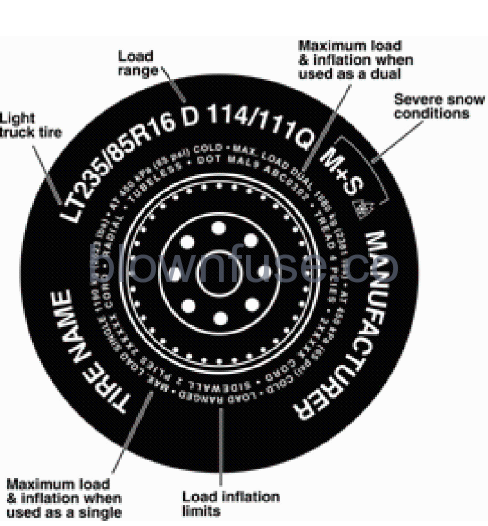
Tires for light trucks have other markings besides those found on the sidewalls of passenger tires.
LT – The “LT” indicates the tire is for light trucks or trailers.
ST – An “ST” is an indication the tire is for trailer use only.
Max. Load Dual kg (lbs.) at kPa (psi) Cold
This information indicates the maximum load and tire pressure when the tire is used as a dual, that is, when four tires are put on each rear axle (a total of six or more tires on the vehicle).
Max. Load Single kg (lbs.) at kPa (psi) Cold
This information indicates the maximum load and tire pressure when the tire is used as a single.
Load Range –
This information identifies the tire’s load-carrying capabilities and its inflation limits.
Vehicle Load Limits
Determining the load limits of a vehicle includes more than understanding the load limits of the tires alone.
On a trailer, there is a federal certification label that is located on the forward half of the left (road) side of the RV.
The certification label will indicate the vehicle’s gross vehicle weight rating (GVWR). This is the most weight the fully loaded vehicle can weigh. It will also provide the gross axle weight (GAWR). This is the maximum permissible weight, including cargo, fluids, optional equipment and accessories that can be safely supported by each axle. If there are multiple axles, the GAWR of each axle will be provided.
In the same location as the certification label described above, there is a vehicle placard. This placard provides tire and loading information. In addition, this placard will show a statement regarding maximum cargo capacity.
Cargo Capacities
Cargo can be added to the vehicle up to the maximum weight specified on the placard. The combined weight of the cargo is provided as a single number. In any case, remember the total weight of a fully loaded vehicle cannot exceed the stated GVWR.
Water and propane also need to be considered. The weight of fully filled propane containers is considered part of the weight of the trailer before it is loaded with cargo and is not considered part of the disposable cargo load. Water, however, is a cargo weight and is treated as such. If there is a fresh water storage tank of 100 gallons, this tank when filled would weigh about 800 pounds. If more cargo is being transported, water can be off-loaded to keep the total amount of cargo added to the vehicle within the limits of the GVWR so as not to overload the vehicle. Understanding this flexibility will allow you, the owner, to make choices that fit your travel and camping needs.
When loading your cargo, be sure it is distributed evenly to prevent overloading front to back and side to side. Heavy items should be place low and as close to the axle positions as reasonable. Too many items on one side may overload a tire. The best way to know the actual weight of the vehicle is to weigh it at a public scale. Talk to your trailer dealer to discuss the weighing methods needed to capture the various weights related to the trailer. This would include weights for the following: axles, wheels, hitch or pin and total weight.
How Overloading Affects Your Trailer and Tires
The results of overloading can have serious consequences for passengers’ safety. Too much weight on your vehicle’s suspension system can cause spring, shock absorber, or brake failure, handling or steering problems, irregular tire wear, tire failure or other damage.
An overloaded vehicle is hard to drive and hard to stop. In cases of serious overloading, brakes can fail completely, particularly on steep hills. The load a tire will carry safely is a combination of the size of the tire, its load range, and corresponding inflation pressure.
Excessive loads and/or under inflation cause tire overloading, and as a result, abnormal tire flexing occurs. This situation can generate an excessive amount of heat within the tire. Excessive heat may lead to tire failure.
It is the air pressure that enables a tire to support the load, so proper inflation is critical. Since trailer’s can be configured and loaded in many ways, air pressure must be determined from actual loads (determined by weighing) and taken from the load and inflation tables provided by the tire manufacturer. These air pressures may differ from those found on the certification label. However, they should never exceed the tire limitation for load or air pressure. If you discover that your tires cannot support the actual weights, the load will need to be lightened.
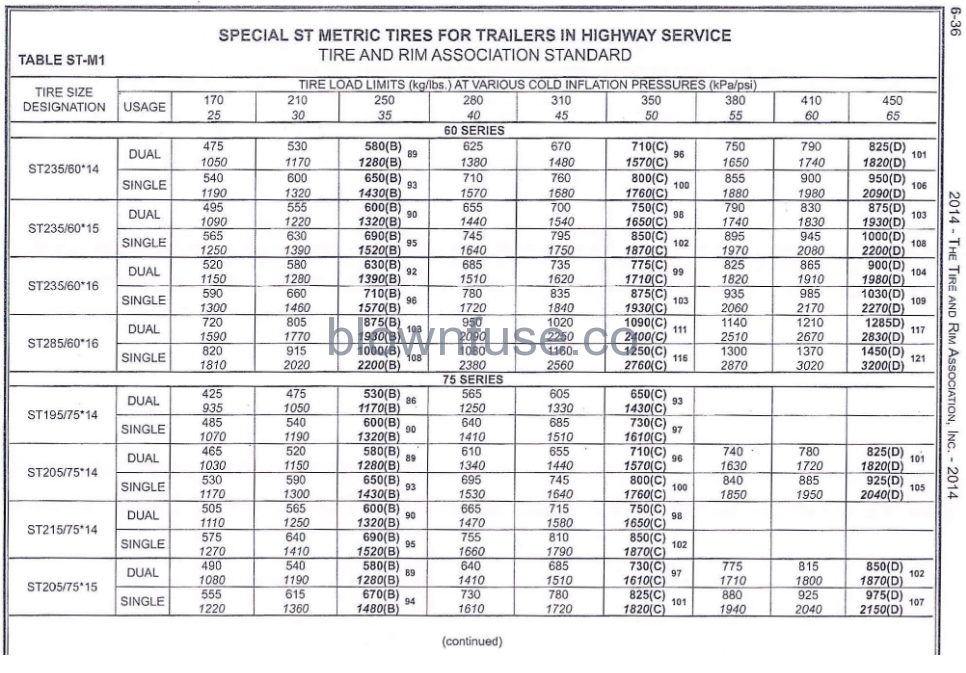
Tire Safety Tips
Preventing Tire Damage
-
Slow down if you have to go over a pothole or other object in the road.
-
Do not run over curbs or other foreign objects in the roadway, and try not to strike the curb when parking.
Tire Safety Checklist
-
Check tire pressure regularly (at least once a month), including the spare.
-
Inspect tires for uneven wear patterns on the tread, cracks, foreign objects, or other signs of wear or trauma.
-
Remove bits of glass and foreign objects wedged in the tread.
-
Make sure all of your tire valves have valve caps
-
Check tire pressure before going on a long trip.
-
Do not overload your vehicle. Check the Tire Information and Loading Placard or Owner’s Manual for the maximum recommended load for the vehicle.
Steps For Determining Correct Load Limit
-
Locate the statement “The combined weight of occupants and cargo should never exceed XXX lbs.” on your vehicle placard.
-
Determine the combined weight of the driver and passengers that will be riding in your vehicle.
-
Subtract the combined weight of the driver and passengers from XXX kilograms or XXX pounds.
-
The resulting figure equals the available amount of cargo and luggage capacity.
For example, if the “XXX” amount equals 1400 lbs. and there will be five 150 lb. passengers in your vehicle, the amount of available cargo and luggage capacity is 650 lbs. (1400-750 (5 x 150) = 650 lbs.)
-
Determine the combined weight of luggage and cargo being loaded on the vehicle. That weight may not safely exceed the available cargo and luggage capacity calculated in Step 4.
-
If your vehicle will be towing a trailer, load from your trailer will be transferred to your vehicle. Consult this Manual to determine how this reduces the available cargo and luggage capacity of your vehicle.
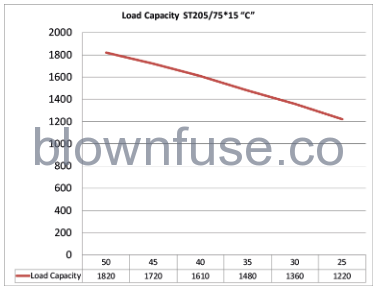
|
Load Capacity ST205/75*15 “C” |
||||||
|---|---|---|---|---|---|---|
|
PSI |
50 |
45 |
40 |
35 |
30 |
25 |
|
Load Capacity |
1820 |
1720 |
1610 |
1480 |
1360 |
1220 |
*2014 Tire and Rim Association
